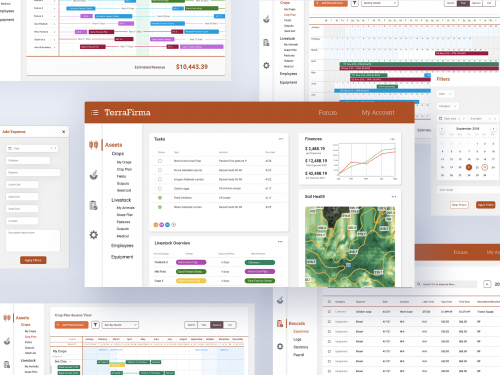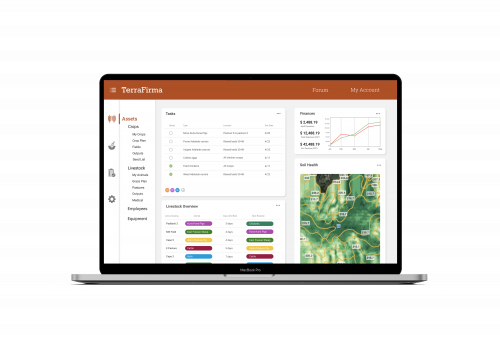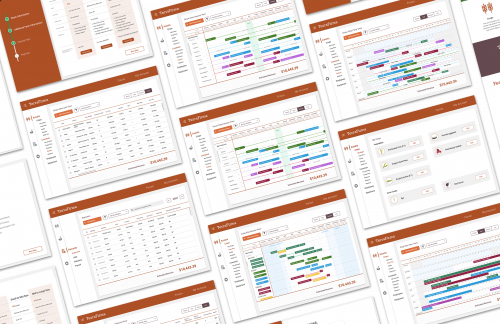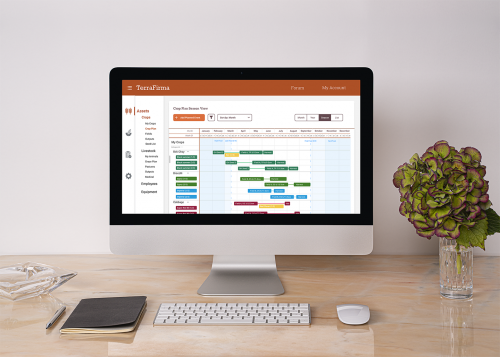Product Name: TerraFirma
Topic/problem description:
The current state of conventional farming has decimated soil health in America; it is estimated there are 60 harvests left before the world’s topsoil is gone. One inch of life-giving topsoil takes anywhere from 500-1000 years to naturally form, during a time where the average conventional farmer is losing the equivalent of 30 soccer fields of topsoil per minute. Over the past century, the intensive industrial practices used in conventional farming has degraded soil globally, so much so they’re estimated to have lost between 30 and 50% of their original carbon content.
Regenerative farming offers a viable solution to this soil problem, but currently less than 5% of farmers use regenerative methods. Regenerative agriculture is a holistic system of farming principles and practices that work to rehabilitate the farm ecosystem by focusing on soil health; By functioning in a closed loop, this method of farming improves the resources it uses, rather than destroying or depleting them. In short, managing a farm as nature would.
Regenerative farming generally follows six core principles that seek to restore soil health and provide organic produce:
- No till
- Biodiversity
- Cover cropping
- Integration of Livestock
Barriers to entry include stigma and skepticism in attitudes towards liberal/environmentally motivated outsiders, perceived cost, risk, and lack of education and awareness.
How might we make regenerative farming more accessible to conventional family farms?
Solution:
By making complex regenerative agricultural principals like rotational grazing and cover cropping easier to use and understand with clear visuals and aggrotech aid, more farmers will incorporate them into practice, restoring their soils and reducing national farm debt.
TerraFirma is the only regenerative organic farm management software that manages crops, crop rotations, livestock, rotational grazing, records and finances, and soil health, to better guide farmers through managing their farms and making biodiversity high priority and easily accessible.




